Wild Carrot
- Scientific name: Daucus carota
- Common name: Queen Anne’s Lace
- Plant family: Apiaceae
- Parts used: Whole herb, seeds, root
- Medicinal actions: Diuretic, Anti-lithic, Carminative, Abortifacient, Deobstruent, Emmenagogue
- How does it work? Wild Carrot contains chemicals that might have effects on blood vessels, muscles, and the heart.
General Overview
Wild Carrot, or Queen Anne’s Lace is the wild progenitor of our cultivated carrot. It still has many of the properties lost in cultivation. If an apple a day will keep the Doctor away, legend has it that a Wild Carrot a day might keep death itself away!
The parts that grow above the ground and an oil made from the seeds are used to make medicine. Be careful not to confuse Wild Carrot with the common carrot (which has the familiar orange tap root we eat).
Wild Carrot has been used for centuries as an alternative medicine. It is used for urinary tract problems including kidney stones, bladder problems, water retention, and excess uric acid in the urine; and also for gout, a painful joint problem caused by too much uric acid.
The seed oil is used for severe diarrhea (dysentery), indigestion, and intestinal gas. Women use it relieve pain in the uterus and to start their menstrual periods.
Other uses include treatment of heart disease, cancer, kidney problems, and worm infestations. It is also used as a “nerve tonic” and to increase sexual arousal (as an aphrodisiac).
Constituents
The medicinal properties of the seeds are owing to a volatile oil which is colorless or slightly tinged with yellow; this is procured by distilling with water. They also yield their virtues by infusion to water at 212° F; boiling dissipates them. No thorough analysis has been made.
Description
A pest to farmers, a joy to the flower-lover, and a welcome signal for refreshment to hosts of flies, beetles, bees, and wasps, especially to the paper-nest builders, the sprangly wild carrot lifts its fringy foliage and exquisite lacy blossoms above the dry soil of three continents. From Europe it has come to spread its delicate wheels over our summer landscape, until whole fields are whitened by them east of the Mississippi.
Wild carrot is a biennial plant, and in its second year, from a taproot, the stems grow to a height of two to four feet or more. The stems are erect and branched, generally about 2 feet high, tough and furrowed. Both stems and leaves are more or less clothed with stout coarse hairs. The leaves are very finely divided, the lowest leaves considerably larger than the upper; their arrangement on the stem is alternate, and all the leaves embrace the stem with the sheathing base, which is so characteristic of this group of plants, the Umbelliferae, to which the Carrot belongs.
The two to four inch “flower” is actually a compound of terminal umbels, made up of many small white flowers. The central flower of the Umbelliferae is often purple. A ring of finely-divided and leaf-like bracts grows at the point where the umbel meets the stem. The blossoms are densely clustered together in terminal umbels, or flattened heads, in which the flower-bearing stalks of the head all arise from one point in rays, like the ribs of an umbrella, each ray again dividing in the case of the Carrot, in like manner to form a secondary umbel, or umbellule of white flowers, the outer ones of which are irregular and larger than the others.
The Wild Carrot is in bloom from June to August, but often continues flowering much longer. The flowers themselves are very small, but from their whiteness and number, they form a conspicuous head nearly flat while in bloom, or slightly convex, but as the seeds ripen, the umbels contract, the outer rays, which are to begin with 1 to 2 inches long, lengthening and curving inwards, so that the head forms a hollow cup hence one of the old popular names for the plant – Birds’ Nest.
The fruit is slightly flattened, with numerous bristles arranged in five rows. The ring of finely-divided and leaf-like bracts at the point where the umbel springs is a noticeable feature.
Its root is small and spindle shaped, whitish, slender and hard, with a strong aromatic smell and an acrid, disagreeable taste, very different to the reddish, thick, fleshy, cultivated form, with its pleasant odor and peculiar, sweet, mucilaginous flavor. It penetrates some distance into the ground, having only a few lateral rootlets.
Varieties
The Carrot is well distinguished from other plants of the same order by having the central flower of the umbel, or sometimes a tiny umbellule, of a bright red or deep purple color, though there is a variety, Daucus maritimus, frequent in many parts of the seacoast in the south of England, which differs in having somewhat fleshy leaves and no central purple flower. In this case, all the flowers of the head have usually a somewhat pinkish tinge. There was a curious superstition that this small purple flower of the Carrot was of benefit for mitigating epilepsy.
Habitat
The Carrot was in ancient times much valued for its medicinal properties; the Wild Carrot, which is found so plentifully in Britain, both in cultivated lands and by waysides, thriving more especially by the sea, is superior, medicinally, to the cultivated kind.
Probably originally a native of the sea-coasts of Southern Europe degenerated into its present wild state, but of very ancient cultivation. The name ‘Carrot’ is Celtic, and means ‘red of colour,’ and Daucus from the Greek dais to burn, signifying its pungent and stimulating qualities.
This biennial herb has become naturalized throughout the United States and Canada. Wild Carrot blooms in summer and fall. It thrives best in sun to partial shade. Daucus carota is commonly found along roadsides and in unused fields.
Cautions
Extra caution should be used when collecting Wild Carrot because it bears a close resemblance to poison hemlock. In addition, the leaves of the Wild Carrot may cause phytophotodermatitis, so caution should also be used when handling the plant. It has been used as a method of contraception and an abortifacient for centuries.
Cultivation and Harvesting
These are considered very easy to grow because there is not much maintenance or care that is required if any at all. Simply take seeds and toss them into a field or dirt area. By the following year, the Queen Anne’s Lace Flowers will be everywhere. They can thrive in poor soils and even dry conditions. The only real requirement that they have is that they like to be in areas that have full sun.
It does blooms from May to October. Queen Anne’s Lace is considered to be a biennial, which means that it can live for two years. The first year is considered its growth period while the second year is its blooming period. It can grow between three and five feet tall, depending upon growing conditions.
Considered an obnoxious weed by some, it can spread very quickly.
Blooming from June to August, but often continues to bloom flowers much longer. Its root is small and spindle shaped, whitish, slender and hard, (tender when young), but soon gets tough, with a strong aromatic smell.
Harvest entire plant in July or when flowers bloom, and dry for later herb use. Collect edible roots and shoots in spring when tender. Leaves are best when young.
Harvest seeds in late summer, through the autumn. This umbellifer, like many relatives, contains photo-toxic furanocoumarins. Some individuals may find the sap causes mild contact dermatitis. Furanocoumarins are broken down with cooking, and harmless to ingest in dietary quantities. For safety, harvest leaves with gloves and sleeves to protect your skin.
Medicinal Uses
Common garden carrots are a domesticated form of the wild carrot that has been selectively bred for a large, tender taproot. The seed of the wild carrot, commonly know as Queen Anne’s Lace, is the part used medicinally.
Wild carrot seeds have been used historically as a natural morning after contraceptive, but this use remains controversial. Wild carrot seeds are not readily available commercially, but can be wildcrafted by those who are very confident in their plant identification skills.
Note: Wild carrot is similar in appearance to the deadly poison hemlock, Conium maculatum.
All parts of the plant have uses as food or medicine. The documented medicinal use of Wild Carrot seeds can be traced back to classical times, where the Roman Encyclopaedist Aulus Cornelius Celsus (25 BC – 50 AD), mentioned the use of Wild Carrot seeds in his work ‘De medicina’, written almost 2000 years ago.
Wild carrots belong to Mercury, and therefore break wind, and remove stitches in the sides, provoke urine and women’s courses, and helpeth to break and expel the stone; the seed also of the same worketh the like effect, and is good for the dropsy, and those whose bellies are swoln with wind
~Nicholas Culpeper, 1653
The esteemed herbal author, Juliette de Bairacli Levy, wrote that carrot leaves help to control blood sugar levels, and she used them as part of a nutritional approach to help treat diabetes. Unless young, they are better cooked than raw! The roots are generally too fibrous and woody to bother with, apart from making stock, to which they impart good flavor.
Many of the medicinal claims for the Wild Carrot point to its use in supporting the elimination system, stimulating the flow of urine, and to the removal of waste products by the kidneys. The seeds are anti-lithic, helping to prevent or clear out sand and gravel from the kidneys, and so are also useful in cases of gout. Like other plants in the carrot family, the seeds are also carminative, helping calm and settle the stomach and easing flatulence.
Wild Carrot seeds have also traditionally been used for the very same purpose as its now extinct relative – ‘silphion’. This particular plant was extremely sought after by the Romans – infamous for their orgies – and was widely used as a contraceptive aid before its eventual demise. For practical medicinal purposes, Wild Carrot seeds are made into a tincture, as otherwise they need chewing on to release the essential oils.
Wild Carrot seeds are known to work only when used at the very early onset of pregnancy, so traditionally a tincture would be taken everyday for the week or so around the period of ovulation. The seeds can induce uterine contractions, and their use is not recommended for pregnant women.
An infusion of the whole herb is considered an active and valuable remedy in the treatment of dropsy, chronic kidney diseases and affections of the bladder. The infusion, made from 1 OZ. of the herb in a pint of boiling water, is taken in wineglassful doses. Carrot tea, taken night and morning, and brewed in this manner from the whole front, is considered excellent for a gouty disposition. A strong decoction is very useful in gravel and stone, and is good against flatulence. A fluid extract is also prepared, the dose being from 1/2 to 1 drachm.
The seeds are carminative, stimulant and very useful in flatulence, windy colic, hiccough, dysentery, chronic coughs, etc. The dose of the seeds, bruised, is from one-third to one teaspoonful, repeated as necessary. They were at one time considered a valuable remedy for calculus complaints. They are excellent in obstructions of the viscera, in jaundice (for which they were formerly considered a specific), and in the beginnings of dropsies, and are also of service as an emmenagogue. They have a slight aromatic smell and a warm, pungent taste. They communicate an agreeable flavour to malt liquor, if infused in it while working in the vat, and render it a useful drink in scorbutic disorders.
Old writers tell us that a poultice made of the roots has been found to mitigate the pain of cancerous ulcers, and that the leaves, applied with honey, cleanse running sores and ulcers. An infusion of the root was also used as an aperient.
A medicinal infusion is used in the treatment of various complaints including digestive disorders, (soothes the digestive tract), kidney and bladder diseases and in the treatment of dropsy, it supports the liver, stimulates the flow of urine and the removal of waste by the kidneys. A wonderfully cleansing medicinal herb, an infusion of the leaves has been used to counter cystitis and kidney stone formation, and to diminish stones that have already formed. The seeds can be used as a settling carminative agent for the relief of flatulence and colic.
Wild Carrot leaves contain significant amounts of porphyrins, which stimulate the pituitary gland and lead to the release of increased levels of sex hormones, and stimulates the uterus. The plant is also used to encourage delayed menstruation, can induce uterine contractions and so should not be used by pregnant women. The seed is a traditional ’morning after’ contraceptive and there is some evidence to uphold this belief. An essential oil obtained from the seed has also been used cosmetically in anti-wrinkle creams. A strong decoction of the seeds and root make a very good insecticide.
Preparation and Dosage
- Tea: To 1 OZ. of dried herb add 1 pint of boiling water steep 10 to 15 min. Drink three times a day.
As a Food
Carrot seeds are a prime example of forgotten flavors. The wonderfully aromatic seeds never fail to impress, carrying hints of citrus, cumin, coriander, and caraway.
In foods, Wild Carrot oil is used to flavor alcoholic and non-alcoholic beverages, frozen dairy desserts, candy, baked goods, gelatins, puddings, meat and meat products, condiments, relishes, and soups.
- Recipes and recipe ideas can be found here: Eating To Live – Queen Anne’s Lace
Wild Carrot is edible and medicinal, root is edible cooked or raw while young, but it quickly becomes too woody to consume.
Flower clusters are sometimes battered and fried for a carrot-flavored, quite attractive dish. The aromatic seed is used as a flavoring in stews and soups. The leaves are also edible except in large quantities.
Other Uses
In manufacturing, Wild Carrot seed oil is used as a fragrance in soaps, detergents, creams, lotions, and perfumes.
If used as a dyestuff, the flowers give a creamy, off-white color.
D. carota, when freshly cut, will draw or change color depending on the color of the water in which it is held. This effect is only visible on the “head” or flower of the plant. Carnations also exhibit this effect. This occurrence is a popular science demonstration in primary grade school.
This beneficial weed can be used as a companion plant to crops. Like most members of the umbellifer family, it attracts wasps to its small flowers in its native land; however, where it has been introduced, it attracts very few wasps.
This species is also documented to boost tomato plant production when kept nearby, and it can provide a microclimate of cooler, moister air for lettuce, when intercropped with it. However, the states of Iowa, Ohio, Michigan and Washington have listed it as a noxious weed, and it is considered a serious pest in pastures. It persists in the soil seed bank for two to five years.
The compound carotoxin is naturally found in Daucus carota. It is found to be toxic to mice and Daphnia Magna (water flea).
Queen Anne’s Lace is an important plant in many wildflower meadows. It is friendly to beneficial insects and may provide cover for small wildlife. It provides a lovely, lacy, white filler plant in flower arrangements, similar to baby’s breath.
Folk and Common Names
- Bees’ Nest
- Beesnest Plant
- Bird’s Nest
- Bishop’s Lace
- Carotte Commune
- Carotte Sauvage
- Dauce Carotte
- Daucus
- Devils Plague
- Garden Carrot
- Garijara
- Nan He Shi
- Nid d’Oiseau
- Queen Anne’s Lace
- Shikha-Mula
- Wild Carrot
- Yarkuki
- Zanahoria Silvestre
History and Mythology
D. carota was introduced and naturalized in North America, where it is often known as “Queen Anne’s lace”. Both Anne, Queen of Great Britain, and her great grandmother, Anne of Denmark, are taken to be the Queen Anne for which the plant is named.
Legend has it that Queen Anne, the wife of King James I, was challenged by her friends to create lace as beautiful as a flower. While making the lace, she pricked her finger, and it’s said that the purple-red flower in the center of Queen Anne’s Lace represents a droplet of her blood. Also called Wild Carrot (since Queen Anne’s Lace is the wild progenitor of today’s carrot), Bishop’s Lace or Bird’s Nest (for the nest-like appearance of the bright white and rounded flower in full bloom), in the language of flowers, Queen Anne’s Lace represents sanctuary.
Another interesting tidbit is that while the wild root is yellowish-white, in the 16th century, Dutch growers deliberately bred carrots to be orange, to honor the House of Orange, the Royal Family of the Netherlands. Carrots have been orange ever since, until recent vegetable breeders produced varieties in red, purple, white and yellow again!
Cautions and Contraindications
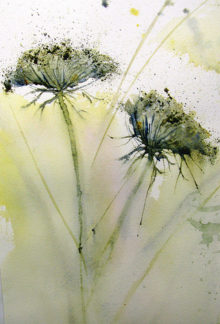 The plant is also used to encourage delayed menstruation, can induce uterine contractions and so should not be used by pregnant women. High doses of wild carrot oil can cause kidney damage and nerve problems. Wild carrot can cause skin rash and increase the risk of sunburn when in the sun.
The plant is also used to encourage delayed menstruation, can induce uterine contractions and so should not be used by pregnant women. High doses of wild carrot oil can cause kidney damage and nerve problems. Wild carrot can cause skin rash and increase the risk of sunburn when in the sun.
Pregnancy and breast-feeding: It’s UNSAFE to take wild carrot if you are pregnant. The seeds, oil, and parts that grow above the ground can make the uterus contract and might start menstruation. These effects could cause a miscarriage.
It’s also a good idea to avoid wild carrot if you are breast-feeding. The seed oil can act like the hormone estrogen. Taking the seeds and parts that grow above the ground is risky because no one really knows how safe they are to use during breast-feeding.
Allergy to celery and related plants: Wild carrot may cause an allergic reaction in people who are allergic to birch, mugwort, spices, celery, and related plants. This has been called the “celery-carrot-mugwort-spice syndrome.”
Kidney problems: Wild carrot might make kidney problems worse, because it irritates the kidneys. Avoid use.
Surgery: Wild carrot might affect blood pressure. Some physicians worry that it might interfere with blood pressure control during and after surgery. Stop using wild carrot at least 2 weeks before a scheduled procedure.
Treatment with UV light: Wild carrot increases the risk of getting a sunburn after exposure to the sun or to UV light. Don’t take wild carrot if you are being treated with UV light.
Estrogen interaction: Large amounts of wild carrot might have some of the same effects as estrogen. But wild carrot isn’t as strong as estrogen pills. Taking wild carrot along with estrogen pills might decrease the effects of estrogen pills.
Lithium interaction: Wild carrot might have an effect like a water pill or “diuretic.” Taking wild carrot might decrease how well the body gets rid of lithium. This could increase how much lithium is in the body and result in serious side effects. Talk with your healthcare provider before using this product if you are taking lithium. Your lithium dose might need to be changed.
Medications for high blood pressure (Antihypertensive drugs) interact with wild carrot. Large amounts of wild carrot seem to increase blood pressure. By increasing blood pressure wild carrot might decrease the effectiveness of medications for high blood pressure.
Medications that increase sensitivity to sunlight (Photosensitizing drugs) interact with wild carrot. Some medications can increase sensitivity to sunlight. Wild carrot might also increase your sensitivity to sunlight. Taking wild carrot along with medications that increase sensitivity to sunlight could increase the chances of sunburn, blistering or rashes on areas of skin exposed to sunlight. Be sure to wear sunblock and protective clothing when spending time in the sun.
In Daucus carota, the amount of toxin overall is small, though it has been known to cause a slight intoxication to grazing large mammals, like cattle and horses, when ingested. If too much of the plant is consumed, the wildflower can be dangerously toxic to humans.
Daucus [carota] has been reported to contain acetone, asarone, choline, ethanol, formic acid, HCN, isobutyric acid, limonene, malic acid, maltose, oxalic acid, palmitic acid, pyrrolidine, and quinic acid.
When in contact with wet Daucus carota, skin irritation and vesication may occur. The cell sap of Daucus carota can also cause skin irritation.
Rennie Luttrull: queen-annes-lace-seeds
Rosanna: Spignel aka Bald Money
Annamarie Squatrito: Fumitory
EILEEN Klinghagen: Pumpkin
Mahmudul Hasan: Celery
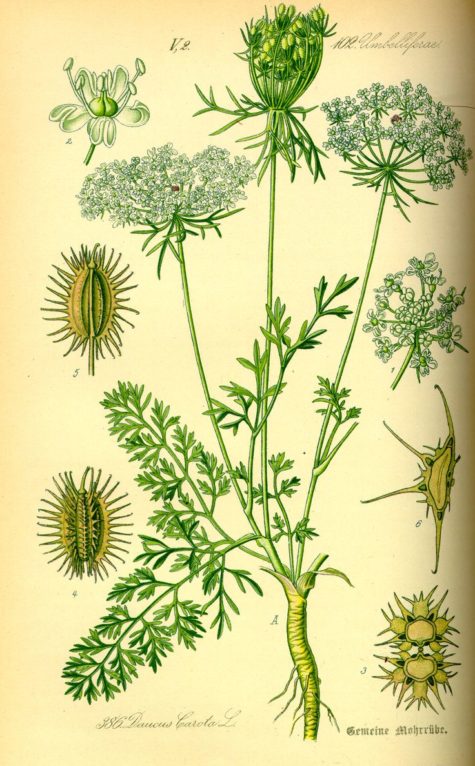
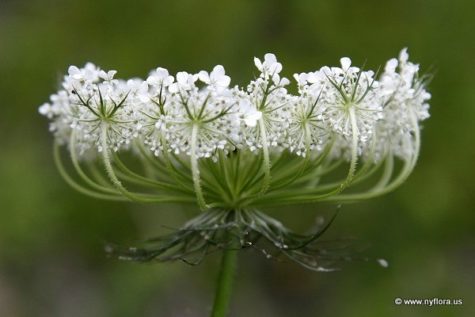
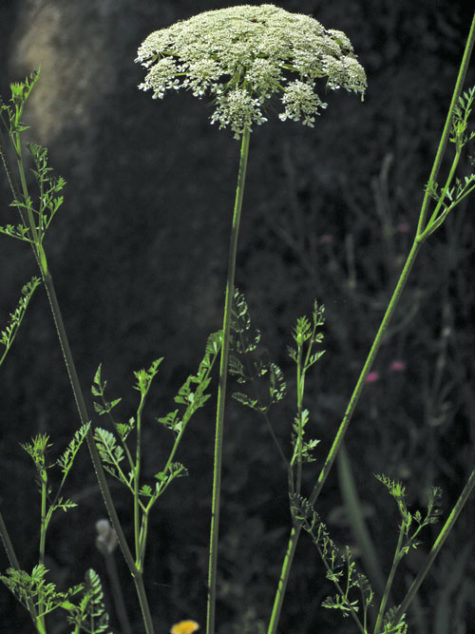
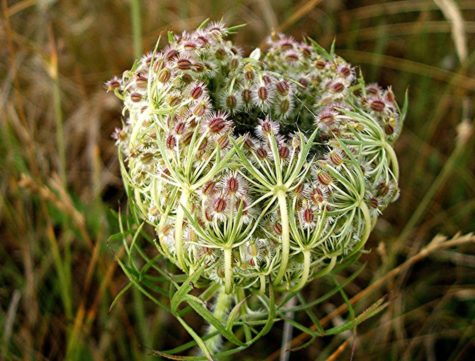
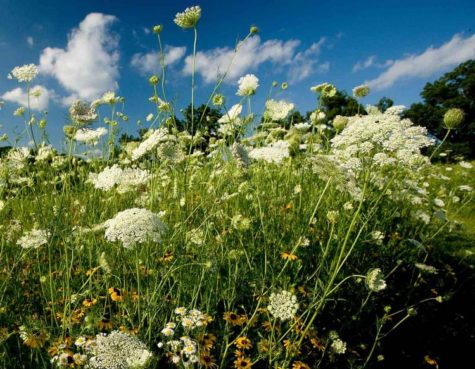
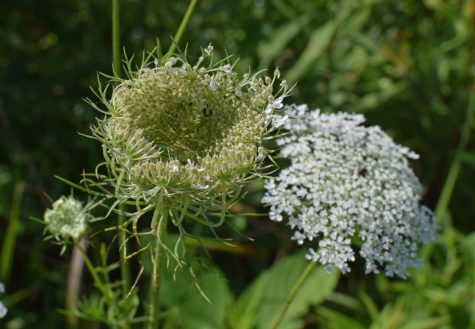
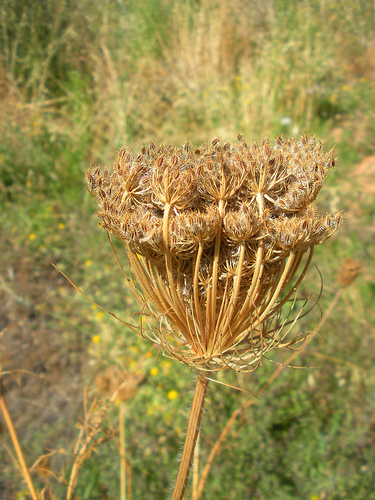
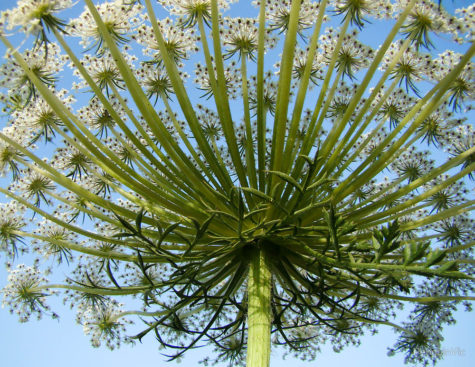
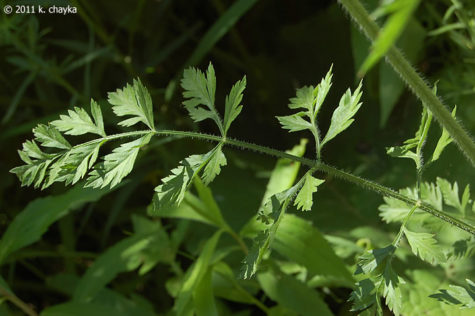
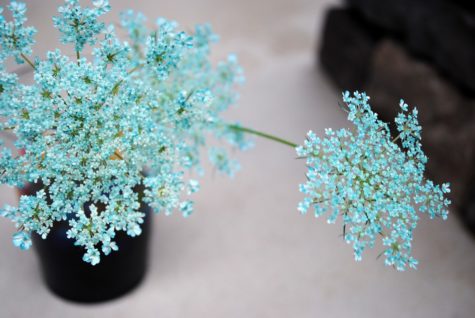
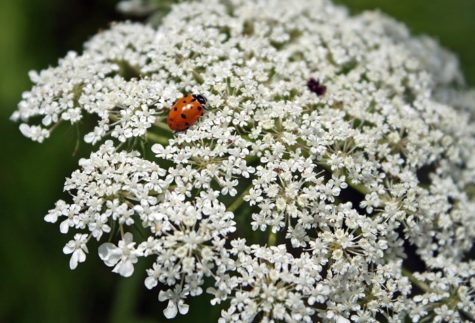
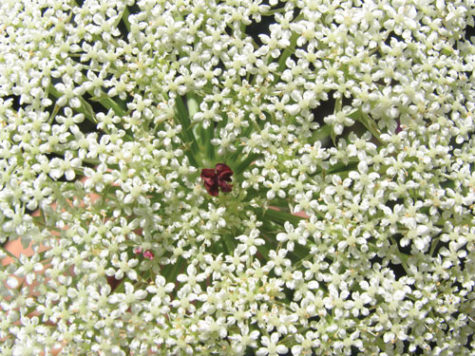
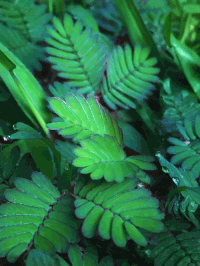

Leave a Reply